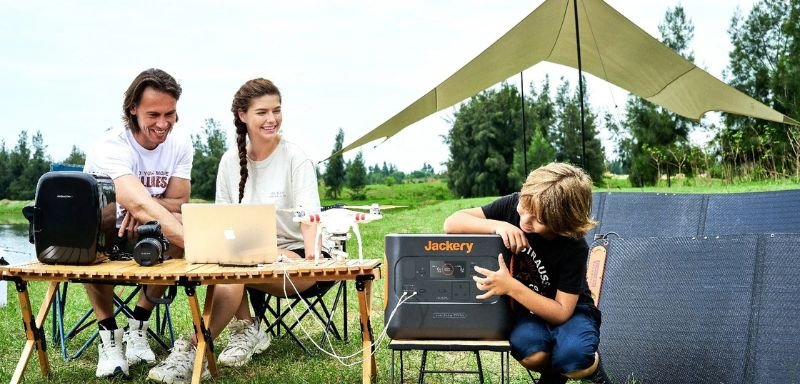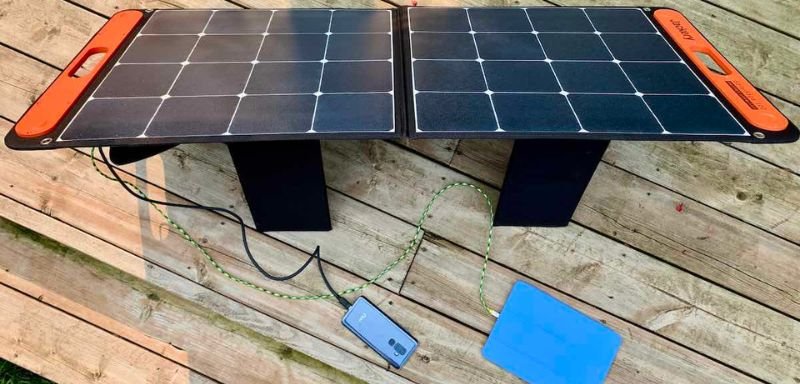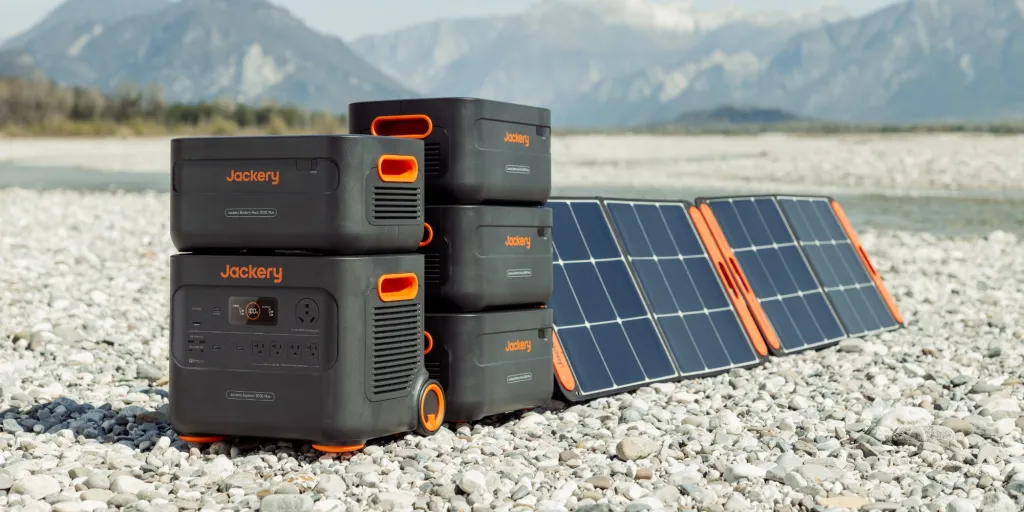Whether you’re escaping into the wild, prepping for emergencies, or just want to power your devices during a blackout, portable energy has become a necessity. And when it comes to compact solar power solutions, Jackery is one of the most recognizable names on the market.

At Review Binge, we’ve tested countless energy brands. This time, we put Jackery’s popular Explorer series and SolarSaga panels to work to see if the brand’s clean design lives up to its performance.
What We Tested
We built a simple yet versatile solar power setup using:
- Jackery Explorer 1000 Portable Power Station
- Two SolarSaga 100W Solar Panels
- Jackery Accessories (Case, DC Cables)
Our goal was to assess real-life usage during weekend camping, light RV travel, and short-term home power backups.
What Jackery Gets Right

1. Dead Simple Setup
Jackery’s appeal lies in its simplicity. The Explorer 1000 came pre-charged. All we had to do was connect the solar panels and press a button. The LCD screen is clear, showing power in/out, and battery percentage. Even first-time users won’t need a manual.
2. Solid Build with Portability in Mind
The design is rugged but lightweight enough for travel. Handles are molded into the unit, and the casing can handle some outdoor wear. We had no trouble carrying it from the car to camp.
3. Quiet, Clean, and Safe
Unlike traditional gas-powered generators, Jackery power stations are completely silent, emission-free, and safe for indoor use. During a small power outage, we ran a Wi-Fi router, two laptops, and lights for over 8 hours on a single charge.
4. Fast Solar Charging
Using two SolarSaga 100W panels, the Explorer 1000 recharged from 0 to full in about 6–7 hours of good sun. That’s fast enough for daily use off-grid.
5. Good Customer Support and Warranty
Jackery’s customer service was quick to respond when we had a shipping question. Products come with a 2-year warranty, and their online resources are beginner-friendly.
Where Jackery Falls Short

1. Not the Most Affordable Option
You’re paying for convenience and branding here. The performance is solid, but watt-for-watt, Jackery is pricier than DIY systems or some competitors like Bluetti or EcoFlow.
2. Limited Expandability
Jackery’s systems, especially mid-range ones like the Explorer 1000, don’t allow you to connect extra batteries. Once it’s drained, you’ll need to recharge — there’s no modular battery expansion.
3. Solar Panels Aren’t Ultra-Rugged
The SolarSaga panels are lightweight and foldable, which is great for portability, but they’re not as weather-resistant or durable as hard-framed alternatives. Handle with care if you’re taking them off-road.
Who Should Choose Jackery?
- Campers and RV travelers who want clean, quiet, and portable power
- Homeowners looking for a backup energy solution during outages
- Beginners in solar power who don’t want to deal with wiring or custom setups
- Anyone looking for a plug-and-play system with a strong brand behind it

It’s not ideal for powering entire households or long-term off-grid cabins — but for mobile and moderate use, it excels.
Final Verdict: ★★★★☆ (4.5/5)
Jackery offers a premium portable power experience. It’s easy to use, sleek, and reliable. While not the cheapest option, it’s one of the most user-friendly brands for mobile and emergency solar energy. If you value convenience, safety, and solid build quality, Jackery is a worthy investment.
Ready to Go Off-Grid?
Looking for more in-depth product breakdowns and trusted reviews? Check out ReviewBinge.







